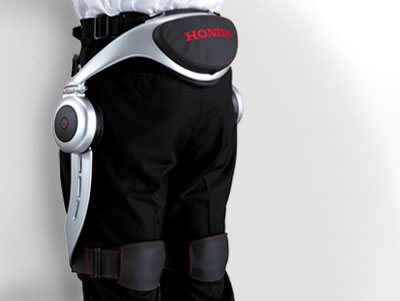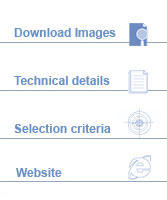|

WT AWARD 2009 - ACCESSIBILITY
Walking Assist Device
Honda Motor
 |

|
Dispositivo di assistenza che può supportare la camminata di persone anziane e di altre persone con muscolatura degli arti inferiori indebolita. Pensato per utenti che sono ancora in grado di camminare autonomamente con l’obiettivo di offrire a quante più persone possibile la gioia della mobilità.La tecnologia di controllo cooperativo utilizzata dal dispositivo è un’innovazione ottenuta attraverso una serie di studi e ricerche condotte sulla camminata umana. Il dispositivo è formato da una struttura rigida molto semplice intorno alle anche e lungo le due cosce. I motori e i sensori sono localizzati a livello delle anche. Le informazioni ottenute da sensori vengono trasmesse all’unità di controllo per l’elaborazione. I motori elettrici forniscono il supporto ottimale rispondendo al comando inviato dall’unità di controllo. La forza rotatoria generata dai motori è trasmessa alla struttura di supporto delle cosce quando l’utente le muove avanti e indietro durante la camminata. Grazie a questa assistenza, la falcata dell’utente sarà più lunga rispetto a quella senza supporto e muoversi sarà più facile e piacevole. Un design molto semplice, studiato per ridurre al minimo il peso del dispositivo, permette di indossarlo grazie a delle cinture attorno alla vita e alle cosce.
Walking assist device which could support walking for the elderly and other people with weakened leg muscles. Designed for people who are still capable of walking on their own, with a goal to provide more people with the joy of mobility.
The cooperative control technology utilized for this device is an innovation achieved through the cumulative study of human walking. It has a simple structure that consist of an hip frame and two thigh frames. Flat motors (actuators) and sensors are located on both ends of the hip frame, which is connected to the right and left thight frames. Applying cooperative control based on the information obtained from hip angle sensors, the motors provide optimal assistance based on a command from the control CPU. Torque generated by the motors is transmitted through the thigh frames when the user moves their thights forward and backward while walking. With this assist, the user’s stride will be lengthened compared to the user’s normal stride without the device and therefore the ease of walking is achieved. A simple design to be worn with a belt around the hip and thigh was employed to help achieve overall weight as light as approximately 2.8kg.
 |
 |
|
